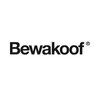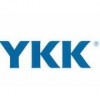Filter interviews by
Young Brand Apparel Production Interview Questions and Answers
Young Brand Apparel Production Interview Experiences
1 interview found
I applied via Naukri.com and was interviewed in Feb 2022. There were 2 interview rounds.

(2 Questions)
- Q1. Excel basis technical round
- Q2. Any pivot or vlookup
- Ans.
Yes, both are commonly used in data analysis and manipulation.
Pivot tables are used to summarize and analyze large datasets.
VLOOKUP is used to search for a specific value in a table and return a corresponding value.
Both functions are commonly used in Excel and other spreadsheet software.
Pivot tables can be used to group and filter data, while VLOOKUP can be used to join data from different tables.
Interview Preparation Tips
- Apptitude
- Maths
Skills evaluated in this interview
Top trending discussions






Interview questions from similar companies

I applied via Indeed and was interviewed before Jul 2020. There was 1 interview round.
Interview Questionnaire
1 Question
- Q1. Tell me about yourself
Interview Preparation Tips

I applied via Naukri.com and was interviewed before Mar 2021. There were 3 interview rounds.
Simple logic q & a.
(3 Questions)
- Q1. How can you help the company do a better job ?
- Q2. What is your ambition in life ?
- Q3. How much did you score in maths in SSC
- Ans.
I scored 95% in maths in SSC
I scored 95% in maths in my SSC exams
Maths was one of my strongest subjects in school
I consistently scored high marks in maths throughout my academic career
(1 Question)
- Q1. How will you like to grow with the company?
Interview Preparation Tips

I applied via Recruitment Consulltant and was interviewed before Jan 2021. There were 3 interview rounds.

(1 Question)
- Q1. Market knowledge, work experience and on distribution.
(1 Question)
- Q1. Salary negotiations, company policies.
Interview Preparation Tips

I applied via Approached by Company and was interviewed in Jan 2022. There were 2 interview rounds.
(1 Question)
- Q1. Working portfolio in realed to your current role in your organization
Advance knowledge on Excel , SQL knowledge, Python programming code
Interview Preparation Tips

I applied via Naukri.com and was interviewed before Dec 2023. There were 3 interview rounds.
(2 Questions)
- Q1. Why are you leaving
- Q2. Your current package
Excel technical round
(2 Questions)
- Q1. Technical knowledge how
- Q2. Notice period days
Interview Preparation Tips

(1 Question)
- Q1. Why are you looking for a change?
Interview Preparation Tips
Timely Salary and friendly atmosphere.

I appeared for an interview before Mar 2024, where I was asked the following questions.
- Q1. What are the job responsibilities associated with this position?
- Ans.
The Assistant Manager oversees team operations, ensures efficiency, and supports management in achieving organizational goals.
Assist in daily operations management, ensuring tasks are completed efficiently.
Support the manager in strategic planning and decision-making processes.
Coordinate team activities and facilitate communication among team members.
Monitor performance metrics and provide feedback to improve productiv...
- Q2. What additional contributions would you make to this role?
- Ans.
I would enhance team collaboration, drive process improvements, and foster a culture of continuous learning.
Implement regular team-building activities to strengthen relationships and improve communication.
Introduce a feedback loop where team members can share insights on processes, leading to more efficient workflows.
Organize training sessions on emerging industry trends to keep the team updated and competitive.
Develop...

(4 Questions)
- Q1. Quality Stander Manufacturing sop
- Q2. Jobs rolls Responsible handle quality
- Q3. Garments Question Technical question
- Q4. Technical question spi Printing and emb
Interview Preparation Tips

(4 Questions)
- Q1. Spring boot question
- Q2. Spring mvc question
- Q3. Database all join
- Q4. Html css js jquery
Interview Preparation Tips
Young Brand Apparel Interview FAQs
Tell us how to improve this page.
Young Brand Apparel Interviews By Designations
Interview Questions for Popular Designations
- Production Engineer Interview Questions
- Production Supervisor Interview Questions
- Production Manager Interview Questions
- Production Officer Interview Questions
- Executive Production Interview Questions
- Senior Production Engineer Interview Questions
- Production Chemist Interview Questions
- Production Operator Interview Questions
- Show more
Interview Questions from Similar Companies
|
Executive
11
salaries
| ₹2.7 L/yr - ₹4.5 L/yr |
|
Senior Executive
11
salaries
| ₹2.9 L/yr - ₹5.5 L/yr |
|
Assistant Manager
10
salaries
| ₹4.1 L/yr - ₹11 L/yr |
|
Senior Merchandiser
6
salaries
| ₹5.7 L/yr - ₹7.8 L/yr |
|
Junior Merchandiser
6
salaries
| ₹1.8 L/yr - ₹3 L/yr |

Monte Carlo

Jaipur Rugs

YKK

Van Heusen
- Home >
- Interviews >
- Young Brand Apparel Interview Questions >
- Young Brand Apparel Production Interview Questions








